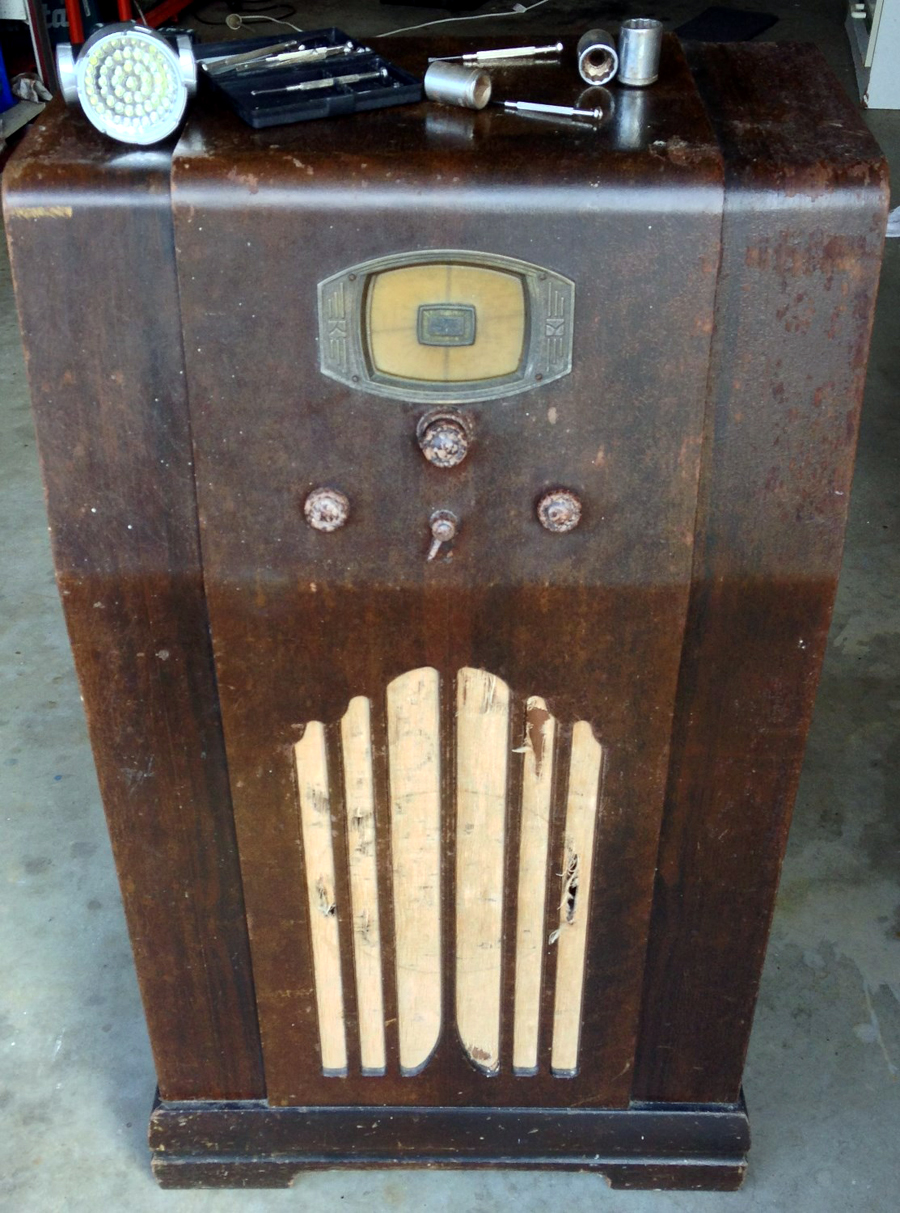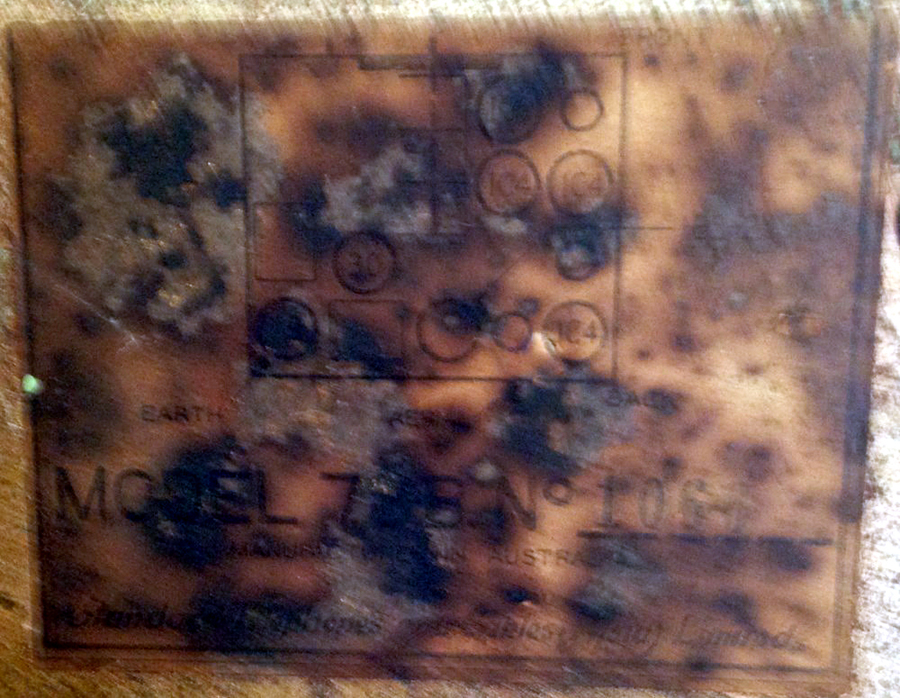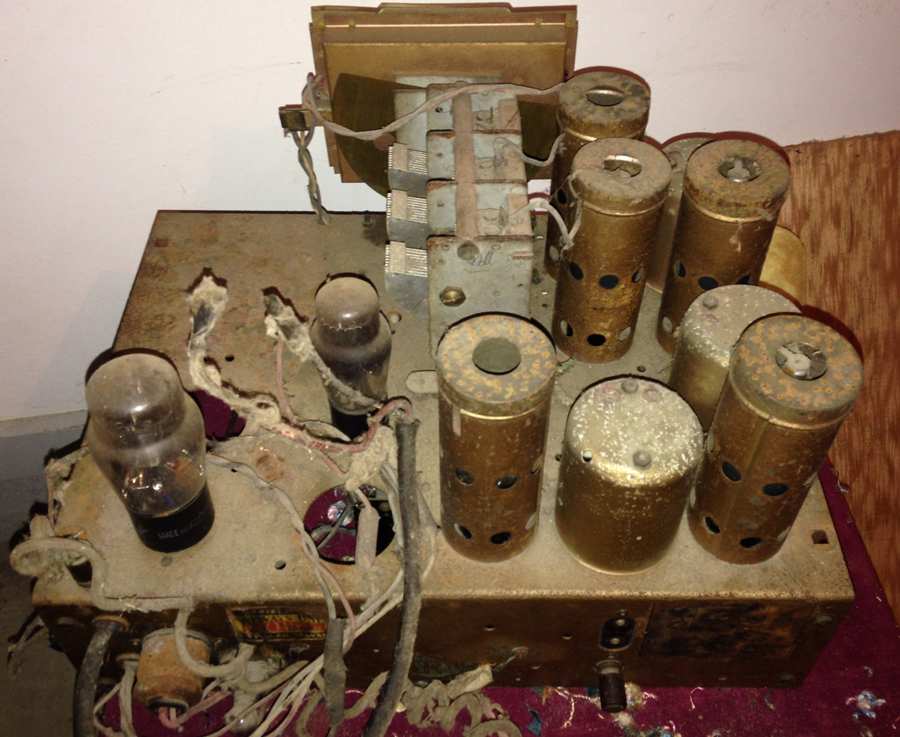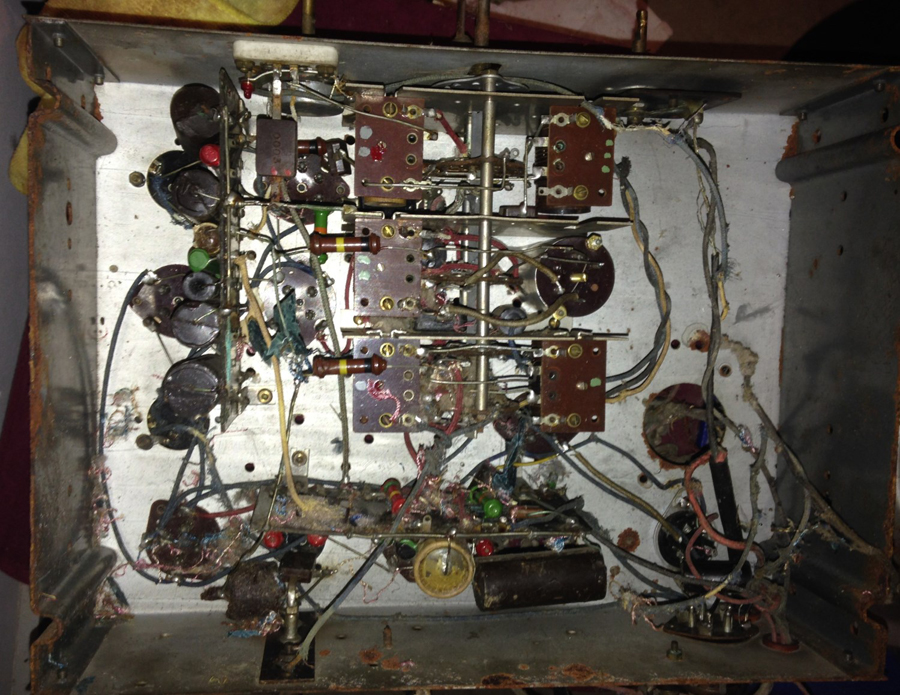Member Introductions
Forum home - Go back to Member Introductions
|
Young Newbie with a STC Console Radio
|
|
|
Return to top of page · Post #: 1 · Written at 3:31:51 PM on 20 February 2018.
|
|
|
|
Location: Coffs Harbour, NSW
Member since 20 February 2018 Member #: 2212 Postcount: 2 |
|
So yesterday I was walking through a second hand shop and spotted a large console radio and bought it on a whim.     |
|
|
Return to top of page · Post #: 2 · Written at 5:13:08 PM on 20 February 2018.
|
|
|
|
Location: Hobart, TAS
Member since 31 July 2016 Member #: 1959 Postcount: 591 |
|
Welcome HankKitts, |
|
|
Return to top of page · Post #: 3 · Written at 6:42:09 PM on 20 February 2018.
|
|
|
|
Location: Sydney, NSW
Member since 28 January 2011 Member #: 823 Postcount: 6908 |
|
Welcome to V-R. |
|
|
Return to top of page · Post #: 4 · Written at 10:58:43 PM on 20 February 2018.
|
|
|
|
Administrator
Location: Naremburn, NSW
Member since 15 November 2005 Member #: 1 Postcount: 7585 |
|
Photos uploaded. ‾‾‾‾‾‾‾‾‾‾‾‾‾‾‾‾‾‾‾‾‾‾‾‾‾‾‾‾‾‾‾‾‾‾‾‾‾‾‾‾‾‾‾‾‾‾‾‾‾‾‾‾‾‾‾‾‾‾‾‾‾‾‾‾‾‾‾‾ A valve a day keeps the transistor away... |
|
|
Return to top of page · Post #: 5 · Written at 11:02:36 PM on 20 February 2018.
|
|
|
|
Administrator
Location: Naremburn, NSW
Member since 15 November 2005 Member #: 1 Postcount: 7585 |
|
Not sure how rare or desirable STC radios are. ‾‾‾‾‾‾‾‾‾‾‾‾‾‾‾‾‾‾‾‾‾‾‾‾‾‾‾‾‾‾‾‾‾‾‾‾‾‾‾‾‾‾‾‾‾‾‾‾‾‾‾‾‾‾‾‾‾‾‾‾‾‾‾‾‾‾‾‾ A valve a day keeps the transistor away... |
|
|
Return to top of page · Post #: 6 · Written at 11:32:51 PM on 20 February 2018.
|
|
|
|
Location: Sydney, NSW
Member since 28 January 2011 Member #: 823 Postcount: 6908 |
|
OK, the photos show it's a 78B whose valve line up should be: 1C4 1C6 1C4 1C4 1B5 30 19 and according to Radiomuseum data it's a superhet with RF-stage; ZF/IF 450 kHz; 3 AF stage(s). |
|
|
Return to top of page · Post #: 7 · Written at 11:36:52 PM on 20 February 2018.
|
|
|
|
Location: Belrose, NSW
Member since 31 December 2015 Member #: 1844 Postcount: 2674 |
|
Yes, this is a battery radio. It is NOT mains operated. It's what is known as a Farm radio or Bush radio, for use where there was no mains electricity. My small collection is mainly bush radios. |
|
|
Return to top of page · Post #: 8 · Written at 11:49:46 PM on 20 February 2018.
|
|
|
|
Location: Sydney, NSW
Member since 28 January 2011 Member #: 823 Postcount: 6908 |
|
I've quoted the line-up from Radiomuseum in post #6, which also mentions for this model a 9 volt battery, presumably the C supply. |
|
|
Return to top of page · Post #: 9 · Written at 12:28:57 AM on 21 February 2018.
|
|
|
|
Location: Belrose, NSW
Member since 31 December 2015 Member #: 1844 Postcount: 2674 |
|
Yes, GTC, I had another look around myself. |
|
|
Return to top of page · Post #: 10 · Written at 1:03:59 AM on 21 February 2018.
|
|
|
|
Location: Hill Top, NSW
Member since 18 September 2015 Member #: 1801 Postcount: 2232 |
|
Interesting old radio. The underside view looks ok, although I'd consider replacing all those black capacitors. |
|
|
Return to top of page · Post #: 11 · Written at 1:22:14 AM on 21 February 2018.
|
|
|
|
Location: Belrose, NSW
Member since 31 December 2015 Member #: 1844 Postcount: 2674 |
|
That's always an issue with battery valves, which is why when I designed my battery valve power supply I deliberately current-limited the B+ and made the A+ supply very low impedance so such accidents can't happen. |
|
|
Return to top of page · Post #: 12 · Written at 5:05:38 AM on 21 February 2018.
|
|
|
|
Location: Melbourne, VIC
Member since 20 September 2011 Member #: 1009 Postcount: 1261 |
|
Schematic here on Paul Ledger's site. |
|
|
Return to top of page · Post #: 13 · Written at 9:35:41 AM on 21 February 2018.
|
|
|
|
Location: Belrose, NSW
Member since 31 December 2015 Member #: 1844 Postcount: 2674 |
|
Well spotted! |
|
|
Return to top of page · Post #: 14 · Written at 2:06:22 PM on 22 February 2018.
|
|
|
|
Location: Coffs Harbour, NSW
Member since 20 February 2018 Member #: 2212 Postcount: 2 |
|
Thanks for all the help so far, most of the wiring is pretty tattered so I'll have to fix that up before I begin figuring out what to do next. |
|
|
Return to top of page · Post #: 15 · Written at 2:42:06 PM on 22 February 2018.
|
|
|
|
Location: Belrose, NSW
Member since 31 December 2015 Member #: 1844 Postcount: 2674 |
|
Vintage Pete is the expert around these parts. |
|
|
You need to be a member to post comments on this forum.
|
|

Sign In

Vintage Radio and Television is proudly brought to you by an era where things were built with pride and made to last.
DISCLAIMER: Valve radios and televisions contain voltages that can deliver lethal shocks. You should not attempt to work on a valve radio or other electrical appliances unless you know exactly what you are doing and have gained some experience with electronics and working around high voltages. The owner, administrators and staff of Vintage Radio & Television will accept no liability for any damage, injury or loss of life that comes as a result of your use or mis-use of information on this website. Please read our Safety Warning before using this website.
WARNING: Under no circumstances should you ever apply power to a vintage radio, television or other electrical appliance you have acquired without first having it checked and serviced by an experienced person. Also, at no time should any appliance be connected to an electricity supply if the power cord is damaged. If in doubt, do not apply power.
Shintara - Keepin' It Real · VileSilencer - Maintain The Rage
